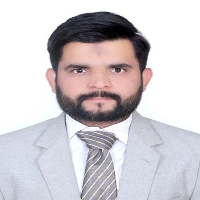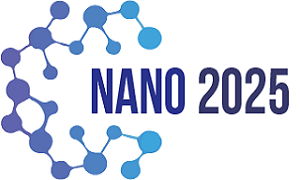2nd World Congress on
Nanotechnology
November 06-07, 2025 | London, UK
Address: Building A, Bath Road, Heathrow Boulevard, Sipson, West Drayton, UB7 0DU, United Kingdom
Nano 2025

University of Karachi, Pakistan
Abstract:
Quercetin (QCT), a natural flavonoid found in various fruits, plants, and vegetables, exhibits remarkable biological activities such as anticancer, antioxidant, anti-aggregator, anti-aging, and anti-inflammatory. However, its safe dosage is reported to be 945 mg/m³, as excessive intake can lead to adverse effects like hypertension, emesis, and decreased serum potassium levels. This study reports a novel colorimetric sensor utilizing polylactic acid-stabilized gold nanoparticles (PLA-AuNPs) for the rapid, sensitive, and selective detection of QCT. The PLA-AuNPs-based sensor demonstrates a limit of detection (LoD) of 0.06 µM and a limit of quantification (LoQ) of 0.198 µM, indicating its high sensitivity. The sensor is seamlessly integrated with artificial intelligence-inspired smartphone technology and paper-based analytical devices (PADs), enabling real-time and on-site detection of QCT. Under optimal conditions, no significant environmental contaminants interfere with QCT detection, underscoring the sensor's remarkable selectivity. Furthermore, the practical applicability of the sensor is validated through analysis of real samples, including tap water, blood plasma, urine, blood serum, tomato juice, and onion extract. To the best of our knowledge, the proposed QCT sensor is the first of its kind among the reported instrumental methods, and it can also be utilized as a smartphone-assisted paper-based sensor. The detection efficiency of the proposed colorimetric sensor is corroborated by a validated UPLC method. The proposed method demonstrated high recoveries in diverse real-world samples, confirming its capability for quantitative analysis of QCT. This innovative approach offers a promising solution for monitoring QCT levels in various matrices, enhancing food safety and health assessment.
Biography:
Daim Asif Raja was a Ph.D. candidate at the International Center for Chemical and Biological Sciences (ICCBS). My research focuses on developing chemo and biosensors for detecting biomolecules and hazardous analytes. He have published 11 articles, six as the first author, with a combined impact factor of approximately 60. In 2022, he have received a travel grant from ACS to attend their conference in Doha, Qatar, where he secured third place among 250 poster presentations. Additionally, He won the third poster award at the Pu'er University in Yunnan, China, in March 2024. He have also filed four patents in Pakistan.
